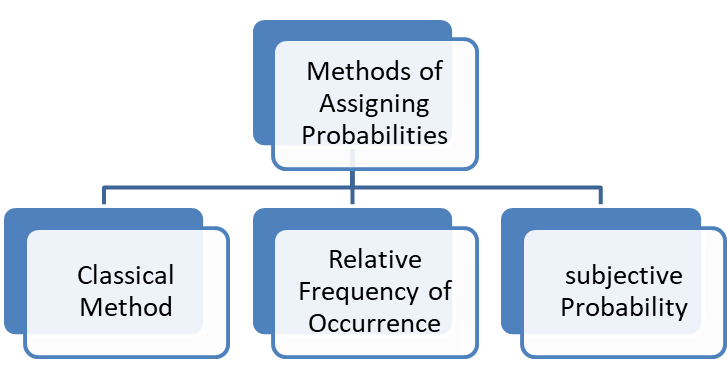What is probability?
·
Probability is the basis for
inferential statistics.
·
Inferential statistics means
taking a sample from a population, computing a statistic on the sample, and
inferring from the statistic the value of the corresponding parameter of the
population.
Why use probability?
·
The reason for doing is that
the value of the parameter is unknown.
·
Because it is unknown, the
analyst conducts the inferential process under uncertainty.
·
By applying rules and laws, the
analyst can often assign a probability of obtaining the results.
Use
·
Probability is used directly in
certain industries and industry applications.
·
For example, the insurance
industry uses probability in actual tables to determine the likelihood of
certain outcomes in order to set specific rates and coverage.
·
The gaming industry uses
probability values to establish changes and payoffs.
·
In comparing the company
figures with those of the general population, the courts could study in
probability of a company randomly hiring a certain profile of employees is
hired.
·
In manufacturing and aerospace,
it is important to know the life of mechanized part and the probability that it
will malfunction at any given length of time in order to protect the firm from
major breakdowns.
Methods of Assigning Probabilities
·
The three general methods of
assigning probabilities
1.
Classical method of Assigning probabilities
·
When probabilities are assigned
based on laws and rules, the method is referred to as classical method.
·
This method involves an experiment, which is a process that
produces outcomes, and an event,
which is an outcome of an experiment.
· Using the classical method, the probability of an individual event occurring is determined as the ratio of the number of items in a population containing the event –r, to the notal number of items in the population- N.
· Range of possible
probabilities 0 ≤ P (E) ≤ 1.
2.
Relative Frequency of Occurrence
·
In this method assigning
probabilities is based on cumulated historical data.
·
With this method, the
probability of an event occurring is equal to the number of times the event has
occurred in the past divided by the total number of opportunities for the event
to have occurred.
·
·
Relative frequency of
occurrence is not based on rules or laws but on what has occurred in the past.
3.
Subjective Probability
·
This method based on the
feelings or insights of person determining the probability.
·
Subjective probability comes
from the person’s intuition or reasoning. The subjective method often is based
on the accumulation of knowledge, understanding, and experience stored and
processed in the human mind. At times it
is merely a guess.
·
Subjective probability can be
used to capitalize on the background of experienced workers and managers in
decision making.
·
Subjective probability also can
be a potentially useful way of tapping a person’s experience, knowledge, and
insight and using them to forecast the occurrence of some event.
Structure of Probability
1.
Experiment: an experiment is a process
that produces outcomes.
·
Auditing every 10th
account to detect any errors.
·
Interviewing 20 randomly
selected consumers and asking them which brand of appliance they prefer.
2.
Event: an event is an outcome of an
experiment.
·
The experiment defines the
possibilities of the event.
·
If the experiment is to sample
five bottles coming off a production line, an event could be to get one
defective and four good bottles.
3.
Elementary Event
·
Events that cannot be
decomposed or broken down into other events are called elementary events.
·
Suppose the experiment is to
roll a die. The elementary events for this experiment are to roll a 1 or roll a
2 or roll a3, and so on.
4.
Sample space: sample space is a complete
roster or listing of all elementary events for an experiment.
5.
Union and intersections: the union is
formed by combining elements from both sets.
·
The intersection contains the
elements common to both sets.
6.
Mutually exclusive events:
·
Two or more events are mutually
exclusive events
·
If the occurrence of one event
precludes the occurrence of the other events.
·
This characteristic means that
mutually exclusive events cannot occur simultaneously and therefore can have no
intersection.
7.
Independent Events
·
Two or more events are
independent events if the occurrence or nonoccurrence of one of the events does
not affect the occurrence or nonoccurrence of the other events.
8.
Collectively exhaustive events
·
A list of collectively
exhaustive events contains all possible elementary events for an experiment.
·
All sample spaces are
collectively exhaustive lists.
9.
Complementary event
·
The complement of event A is
denoted A’. It is “not A”.
·
All the elementary events of an
experiment not in A comprise its compliant.
·
P(A’) = 1- P(A)
General Law of Addition
·
Where X,Y are
events
Special
Law of Addition
General
Law of Multiplication
Special
Law of Multiplication
·
If events X and Y
are independent, a special law of multiplication can be used to find the
intersection of X and Y.
Conditional
Probability
·
Conditional
probabilities are computed based on the prior knowledge that a statistician has
one of the two events being studied.
·
If X, Y are
events, the conditional probability of X occurring given that Y is known or has
occurred is expressed as P(X|Y) and is given it the law of conditional
probability.
Revision
of Probabilities: Bayes' Rule
·
An extension to
the conditional law of probabilities is Bayes' rule, which was developed by and
named for Thomas Bayes (1702-1761).
·
Bayes' rule is a
formula that extends the use of the law of conditional probabilities that allow
revision of original probabilities with new information.
·
By expressing the
law of conditional probabilities in this new way, Bayes' rule enables the
statistician to make new and different application using conditional
probabilities.
·
In particular,
statisticians use Bayes' rule to revise probabilities in light of new
information.
·

